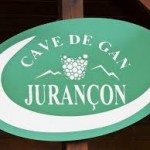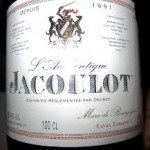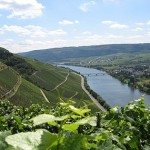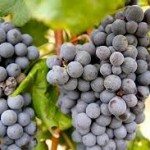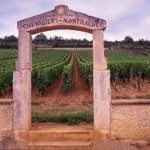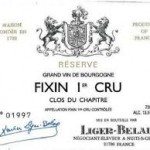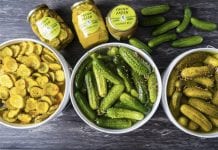Introduction by Nancy Chuda founder and Editor in Chief of LuxEcoLiving and co-founder of Healthy Child Healthy World

Christian Frere and I met by chance in San Francisco outside the highly touted “pearl of a dive” Swan Oyster Depot restaurant. We were both craving the icy cold slurp and taste of freshly shucked oysters flown in from different parts of the world. Little did I know that the man who claimed he loved French “limonade” was talking about his history, roots, and vines. “Limonade” was Christian’s special secret word for what he loves best. Wine. And he knows it like the back of his hand.
Jim and I were quite impressed with his knowledge. We shared stories while standing in the long line outside Swan Oyster Depot. I told Christian we celebrated our honeymoon in France on Il de re where we devoured local huitres (oysters) like popcorn. He shared his passion for people who do the impossible. He asked, “Do you like sea urchin? You know it is a delicacy in Paris… very expensive but I will take you to a place in Santa Barbara where you can by them LIVE.”
We indulged and gorged ourselves at the oyster bar swallowing every last morsel slathered in the depot’s secret red sauce and promised to meet up again at the famous Santa Barbara Harbor.
We kept our promise. It was eight o’clock on a misty Saturday morning when I was asked to open my mouth and try a Sea Urchin. Christian was holding a spiny black creature in his right hand and place a paper bag on a table with his left.
I tried not to look at the soupy liquid inside the urchin while tasting the fertilized yellow delicacy within. I closed my eyes and waited for the savory texture to encompass all of my senses. I swallowed the fishy tasting substance quickly and turned to Jim and said, “your turn.” Christian introduced us to his wonderful friends, the fisherman of Santa Barbara who sell all kinds of fish, crabs, lobster in season and sea urchins. All spend long hours in the darkened sea to capture these creatures. He then revealed a glass bottle of his favorite limonade… of course! It was one of the best French wines of the century.
Need I say more!
By Christian Frere a Wine Connoisseur and honored member of the Conseil de Echansons de France
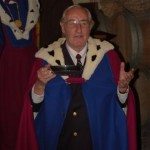 I was not expecting that one day I would write about wine and that this liquid in a carafe that occupied the center of our family lunches and dinners would ever merit my attention. Wine just went with the food. My family bought a “piece” – a barrel – of wine, and children were given wine diluted with water. My father wanted his sons to be used to it, in the French tradition. After all, King Henry IV in his chateau de Pau, was “christened” with drops of the local Jurancon on his lips when he was a baby.
I was not expecting that one day I would write about wine and that this liquid in a carafe that occupied the center of our family lunches and dinners would ever merit my attention. Wine just went with the food. My family bought a “piece” – a barrel – of wine, and children were given wine diluted with water. My father wanted his sons to be used to it, in the French tradition. After all, King Henry IV in his chateau de Pau, was “christened” with drops of the local Jurancon on his lips when he was a baby.

Nancy Chuda, President of LuxEcoLiving, thought that, being part of the “Conseil des Echansons de France”, I was qualified to write about this subject. This deserves a bit of explanation: This Wine brotherhood, the Conseil des Echansons de France, founded in 1954 by Claude Josse, aims to defend and promote best appellations of French terroirs.

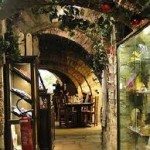
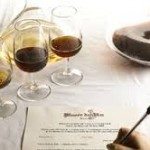
The organization is headquartered at the Musee du Vin, which is in same little square where I have an apartment. The Conseil, which includes professionals, as well as interested amateurs, offers to the public a wide range of cultural activities and events on the subject of the vine and wines. The museum has an outstanding collection of artifacts concerning the history and the making of wine presented in the galleries beneath the hill of Passy, 5 Square Charles Dickens, 75016 Paris.


The museum is worth a long visit. There is a lot to learn. But first let me tell you about Monique and Claude Josse, owners of the Musee du Vin. I live in the same square. Many times I have to go to Paris alone to take care of repairs, pay bills, etc., etc. Those of you who own real estate know what I mean. Not only are the Josses the best professionals in the world of wines, grapes and vinification, they are also the most charming and generous neighbors. Whenever I run into them in the square, they ask me if I have the time for “un petit verre”. The “petit verre” comes with a most interesting lecture about what we are drinking. A few months ago, I was honored to join the , not because I am a professional, but, I guess, for the only thing to my credit, my contribution to the industry as a substantial consumer of wines.


The curator of the museum is Mr. Hervy to whom I send my best regards and my hommages to Mrs. Hervy. Musee du Vin – 5, Square Charles Dickens, 75016 Paris
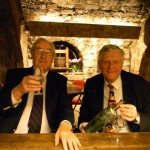
I thought you would enjoy a “Comparison between Burgundy and Bordeaux wines”.
Bordeaux Bourgogne

The landscape
The Bordeaux landscape is flat, all the way to the ocean
The Bourgogne vineyards are on the hills, all along the Route National N.74 (like the restaurant of this name in San Francisco.)
History
Ausone, poet of the IV century, wrote beautiful poems about the wine

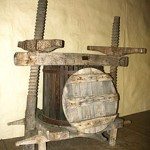
In 1875 the grapes disappeared due to the phylloxera. New vines coming from America were planted.
In 1395, Philippe Le Hardi, ordered the Gamay to be replaced by the Pinot. So, all Burgundy wines are Pinot. In Beaujolais they are Gamay
Sizes (one hectare equals 2.47 acres)
The vineyards of Bordeaux encompass 115,000 hectares.
Chateau Margaux covers 150 hectares.
The vineyards of Bourgogne represent 29,500 hectares.
Clos Vougeot, 50 hectares.
Romanee-Conti, 1.85 hectares
The grapes
The Bordeaux wines are made with various grapes, which can be mixed. We find: Malbec, Semillon, Muscadelle, Merlot, Carmenere, Petit Verdot.
As mentioned earlier all Bourgogne wines are made of Pinot grapes.
Wine regions and vineyards
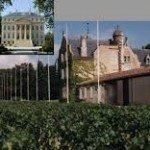
 Le Haut Medoc, the best part.
Le Haut Medoc, the best part.
Les Grave, such as the Haut Brion.
Le Sauterne on five “communes” including Barsac. The grapes are picked up three times successively as they ripen. The little mushroom on the grapes, Botritis, removes the water from the grapes. (If you cannot afford it, ask for a Montbazillac or Capdenac, the Sauterne of the poor, but very good with foie gras.)
-Saint Emillion, Chateau Ausone. Small parcels.
-Entre Deux Mers (mainly Sauvignon) Blanc secs. Pommerol.
But above all, I recommend the Gaillac La Bastidie, remarquable for the price, a property of the Museum of Wine. My wine cellar has many cases of this Gaillac, to be drunk, hopefully, with all my American friends.

I have always been amazed about the sagacity and good taste of the Creator who organized the Bourgogne north to south in the order of a great diner.
We start with the Bourgogne Aligote on the Cote de Dijon. It goes so well with the usual burgundy salad /pate de tete. Do not forget to have a Kir (crème de cassis with Cote de Dijon)
Then follow up with a marvelous Cote de Beaune, Meursault, Beaune.
Then, have one of the remarquable Cote de Nuits, Nuits-St-Georges, Romanee-Conti, La Tache, Richebourg, with game.
With cheese, have a Pommard or Volnay, you will be in heaven. This is why God created the French. He said, they may be a pain, but at least they understand my creation.
In Burgundy, they say about the Bordeaux that they use it to clean the hooves of the horses (but this may not pass the censure).
Note: Chanoine Kir was the mayor of Dijon during WWII. He was a great friend of De Gaulle and was known to get involved in everything to the despair of the Dijonnais.
Tasting

I would not be complete if I did mention basics about tasting.
This is a real art. This is where real professionals exercise their talents.
First, “ le Premier Nez” . Try to see if you can smell a flavor of either nut, strawberry, cherry, current berry, dirt, etc. This confers identity to the wine.
Then,“Visual examination”. Turn around your glass and see if it leaves “tears” on glass. Only 2 to 3 year wines or more leave a trace of glycerol on the glass. Check the “robe”, light yellow, transparent, very clear.
“Nez du Vin/and retro olfaction.” Let the wine breath. Try again, you may find new flavors. Keep the wine in your mouth and chew the wine bringing it to your nose.
“ Gustative examination” The wine should be balanced, structured “at 10 caudalie”( seconds in degustation ).
We begin to speak about a wines quality when the flavor stays in the mouth for 8 to 10 seconds, 8 to 10 caudalies, and exceptional wines when it stays 15 to 20 caudalies.)
I have seen experts, among which Mrs. and Mr. Josse, identify wine, origin, region, age, without hesitation. Amazing!
Only my wife can challenge them, she can smell better than an airport beagle.
Caudalie, cauda,”tail” in Latin.












